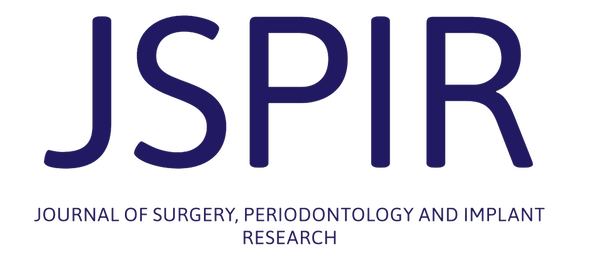Vol. 2, Issue 1, pages 74-80
Resorbable membrane of polyethylene glycol in Wistar rats for guided bone regeneration - Experimental study
Almeida-Sousa J, Correia F, Escobar T, Portela A, Ramalho-Vasconcelos M, Faria-Almeida R
Abstract
Purpose: The aim of the present study was (1) to test whether or not the application of an in situ formed synthetic hydrogel, made of polyethylene glycol (PEG) used as a resorbable membrane for guided bone regeneration, will result in more amount of bone regeneration compared with an uncovered defect and (2) to evaluate if it can prevent the soft-tissue ingrowth into alveolar defects.
Materials and Methods: Two critical size defects were created in seven Wistar rats. In the right side, an in situ formed hydrogel PEG membrane (Straumann MembraGel) was applied into the defect and the left one was kept empty as a control. After 60 days, animals were sacrificed and the calvarial bone was removed. The area of newly formed bone was determined by histomorphometrical analysis. For statistical analysis, the Mann-Whitney-U test was applied to model the amount of new bone formation.
Results: The quantitative histomorphometric analysis obtained a percentage of newly formed bone for the test defects of 61,8% +/-22,2% and 53,8% +/-22,9% in the control group. The observed differences were not statistically significant.
Conclusions
The experimental PEG membrane was biocompatible and prevented soft-tissue ingrowth. There were no statistically significant differences between the groups.
Materials and Methods: Two critical size defects were created in seven Wistar rats. In the right side, an in situ formed hydrogel PEG membrane (Straumann MembraGel) was applied into the defect and the left one was kept empty as a control. After 60 days, animals were sacrificed and the calvarial bone was removed. The area of newly formed bone was determined by histomorphometrical analysis. For statistical analysis, the Mann-Whitney-U test was applied to model the amount of new bone formation.
Results: The quantitative histomorphometric analysis obtained a percentage of newly formed bone for the test defects of 61,8% +/-22,2% and 53,8% +/-22,9% in the control group. The observed differences were not statistically significant.
Conclusions
The experimental PEG membrane was biocompatible and prevented soft-tissue ingrowth. There were no statistically significant differences between the groups.
